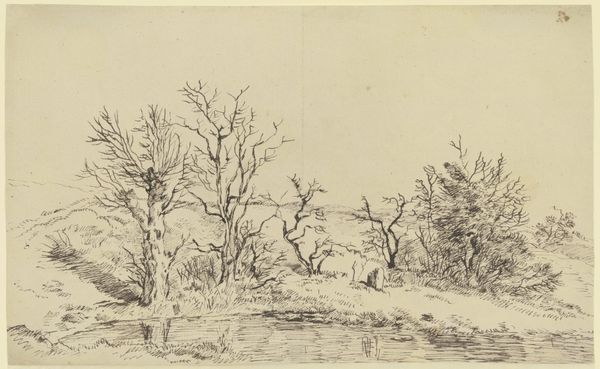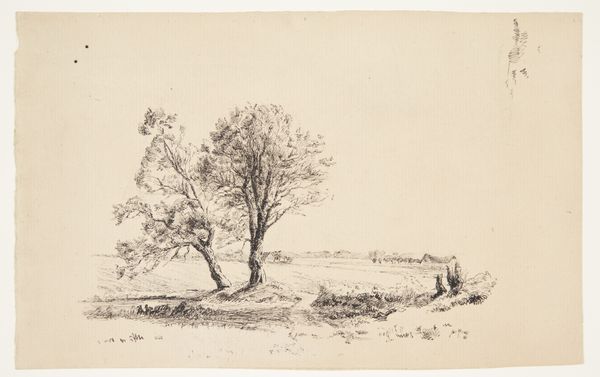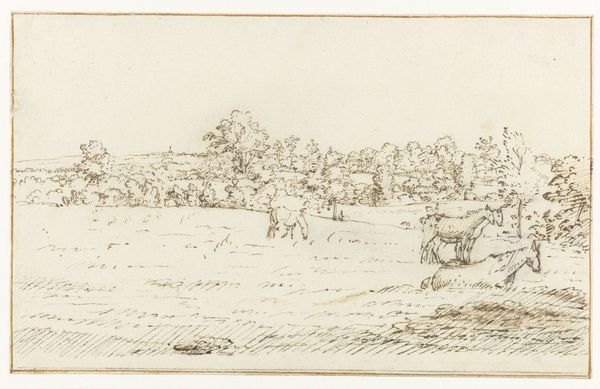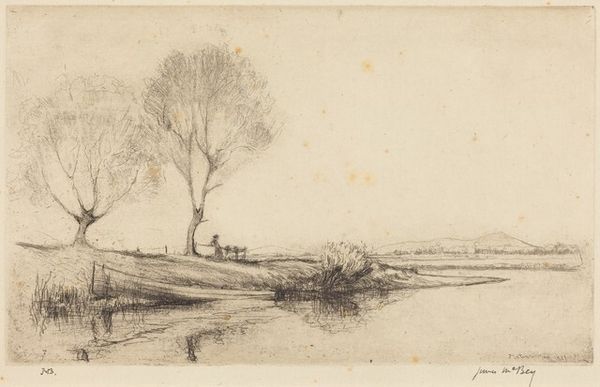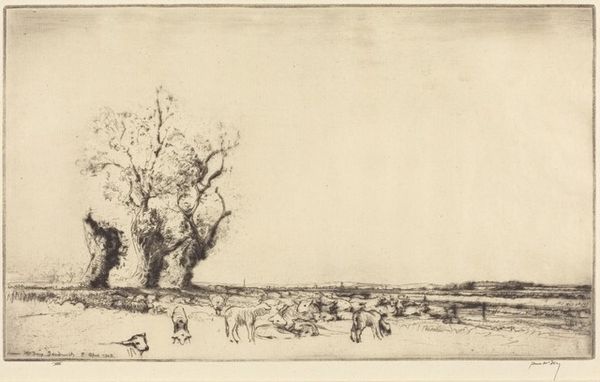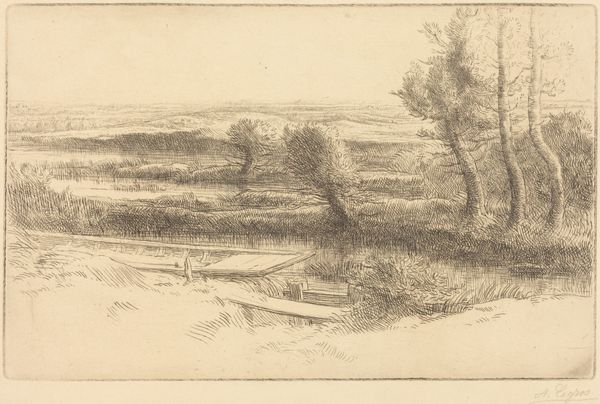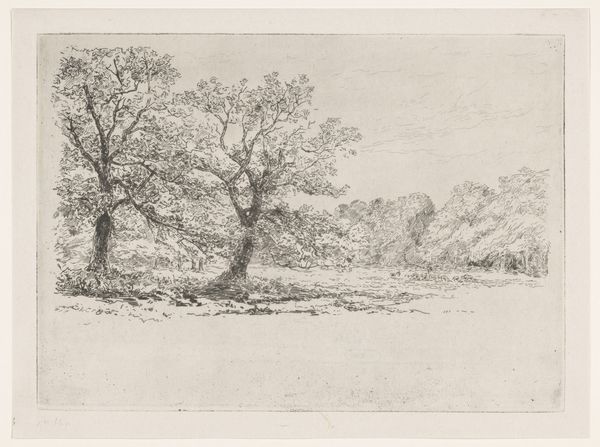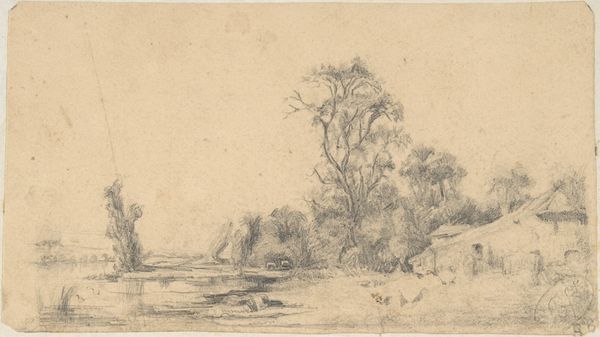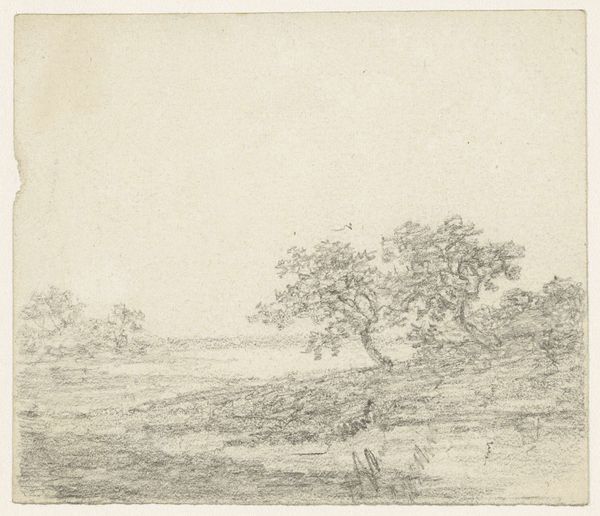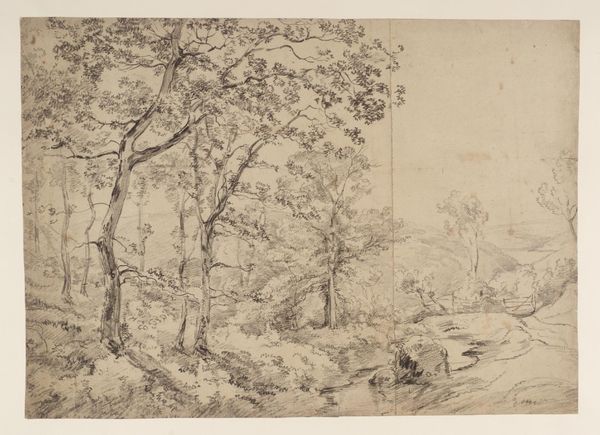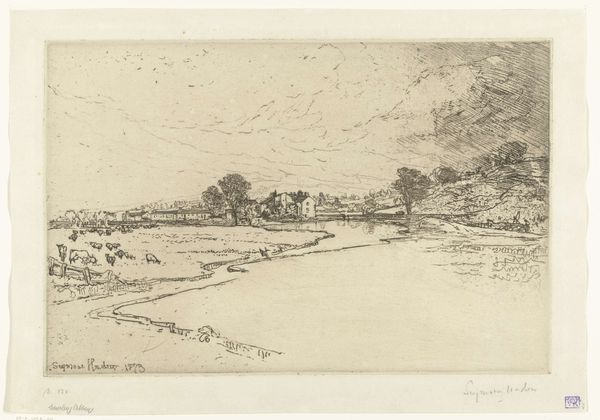
#
landscape illustration sketch
#
amateur sketch
#
light pencil work
#
ink drawing
# print
#
pen sketch
#
pencil sketch
#
personal sketchbook
#
ink drawing experimentation
#
pen-ink sketch
#
sketchbook drawing
Copyright: National Gallery of Art: CC0 1.0
Curator: Looking at "The Foveran," an etching by James McBey from 1912, what's your initial read? Editor: My first impression is one of quiet observation, a fleeting moment captured with understated grace. There's a kind of hazy nostalgia hanging over the scene. Curator: Nostalgia is apt. McBey often returned to scenes like this; etched memories of rural life perhaps. The print shows a figure, almost dissolving into the landscape, walking through a shallow stream. Cattle graze peacefully in the distance, all rendered in these delicate lines. It's as if McBey is inviting us to observe something very humble, a simple life. Editor: Humble indeed, almost to the point of invisibility. What’s fascinating to me is how a seemingly bucolic scene, rendered with such gossamer lines, can evoke such a powerful sense of place and social structure. The very act of choosing this subject, a common farmer rather than the landed gentry who were often depicted. What was the context in which McBey decided to depict it? Curator: McBey operated outside the established academic art world, though he became commercially very successful. Prints like these circulated in a different way, allowing a wider audience to collect and engage with art. His depictions of ordinary rural scenes resonate with an interest in social realism. Editor: It strikes me that the composition almost encourages that engagement. It feels less like a posed portrait of a place and more like a spontaneous snapshot, something deeply personal that draws on broader visual strategies, not only for making it but disseminating it as well, especially with the emergence of prints as a commercially accessible art form. Curator: It’s almost like stumbling upon the artist’s own memory. It really prompts me to ponder how art acts as this lens through which society can choose to view itself. McBey clearly presents an interpretation, inviting viewers into this landscape in order to engage. Editor: Yes, but he frames that interpretation with a careful understanding of artistic lineage. I also like how the sketch gives it an amateur sensibility, which creates a deceptive authenticity. Overall it speaks to the transformative power of simple lines in printmaking and reminds us how artistic styles intersect with historical movements to create art, as a mirror of societal changes, of course. Curator: A mirror, and perhaps, a quiet promise of simpler times. I find McBey's vision profoundly gentle and thoughtful, don't you agree?
Comments
No comments
Be the first to comment and join the conversation on the ultimate creative platform.
